Bringing History to Life for Kids with Roman Board Games at Iovia, Ludbreg
October 17, 2021 - Tired of watching the kids gaming on their gadgets? Take them back to Childhood as It Once Was and learn how to play Roman board games.
Getting kids interested in anything offline is getting harder and harder these days, but one place willing to try is the recently opened Iovia Archaeoogical Park in Ludbreg.
Iovia, which was opened by the Minister of Culture in May this year, documents several thousand years of Ludbreg history, with corresponding Croatian and global chronologies, as well as featuring two Roman villas next door. Located just a few mintutes from the church which houses Croatia's only certified miracle, as well as Ludbreg's most famous claim - the Centre of the World - Iovia is a great addition to an action-packed day trip to this most unusual town. You can learn more about the Iovia Archaeological Park here.
The top floor is home to a thoughtfully-designed seminar room, and one that will prove popular with kids when Iovia soon opens its doors to school eexcurisions. Among the interactive things to learn and try are a selection of Roman board games. There are three in all - Latrunkuli, Teri Lapilli, and Mlin - Merellus. A chance for kids to learn to play some new games offline, as well as to reflect, perhaps, on a childhood some 2,000 years before Instagram and Tik Tok.
Iovia has made available the rules of the game, and I have added some video guides from YouTube.
LATRUNKULI
Rules of the game:
In the game, two players face each other over a rectangular board marked with a grid of squares. Each player has the same number of chips, with one player differing from the other in color. In some versions of this game, each player also has a "dux", a special token with increased powers. The art of the game is in capturing the opponent's chips. The chips move all over the board and catch each other by surrounding each other; a token of one color caught between two others is removed from the game. The winner is the player who catches all the opposing parts.
TERNI LAPILLI
Rules of the game:
In the game, two players face off over a rectangular board marked by a square with nine squares (chip slots) connected by lines (two or four lines that intersect in the center). In addition to various square variants, wheel-like circular surfaces are also known. Each player has three chips, with one player differing from the other in color. The winner is the player who first combines three chips in a row. The game is considered the ancestor of the modern version of tic - tac - toe, and is often identified with one version of the ancient game Mlin or Merellus (Three men 's morris). Many details about this game have remained puzzling to this day. Lately, researchers of ancient games have challenged the application of the circular variant because it is likely that the incised wheels served as bases for other types of games, such as various throwing games.
MLIN - MERELLUS
Mlin (Mill) is a game for two players. The plate consists of three concentric squares and several transversals, making 24 points of intersection. Each player has nine chips, usually in black and white. Players take turns placing a chip anywhere on the board, trying to create a series of three of their own chips (mill). Each player tries to prevent his opponent from forming his own order. Whoever forms a row of three may remove one of the opponent's chips (provided it is not part of the whole row). Once all the chips have been placed, each player alternately moves one chip to the adjacent free spot. Then each tries to create rows and remove the opponent's chips once the player has only three chips left on the board, he can move his chip to any available space. The winner is the player who reduces the opponent to two chips.
You can learn more about Iovia Archaeological Park on the official website.
Learn more about Ludreg in the TC Ludbreg in a Page guide.
Iovia Archaeological Park in Ludbreg: Retracing Roman, Pre-Historic Heritage
September 27, 2021 - The rich heritage of continuous habitation in continental Croatia dating back to the pre-Roman era is documented in the new Iovia Archaeological Park in Ludbreg.
One of the surprising discoveries in the fascinating world of continental Croatian tourism a few years ago was finding out that the oldest continuously inhabited town in Europe was located there. I must confess that when I heard this, I was very surprised - even more so when I had never actually heard of the town. It was just one of the many interesting things you can learn about Vinkovci: 10 Things to Know about Europe's Oldest Town.
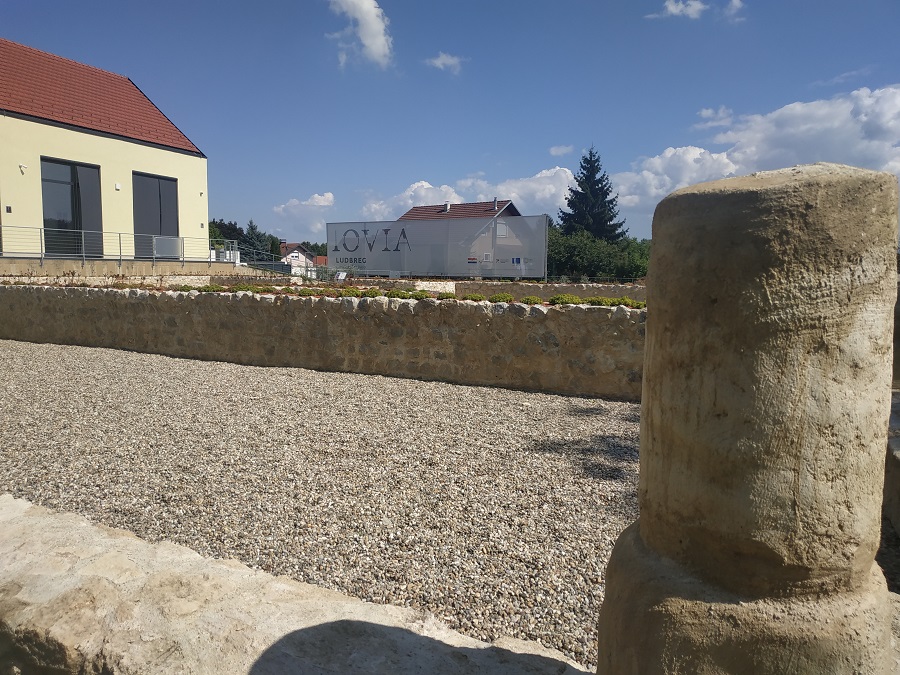
Visitors to the Adriatic coast will be familiar with the rich Roman history, with fabulous examples of its glorious past to be found in UNESCO World Heritage Site, Diocletian's Palace in Split, the Pula Area, and ancient Salona in Solin. Lesser known is the rich Roman history further inland in Croatia.
An important addition to preserving this heritage opened in June this year, in the form of the Iovia Archaeological Park in Ludbreg. Opened in June this year by the Minister of Culture and located on Ludbreg's main square, which is famous for its claim to be the centre of the world, the Iovia Archaeological Park provides a timeline with artifacts of the history of Ludbreg, Croatia, and the world through a variety of multimedia tools.
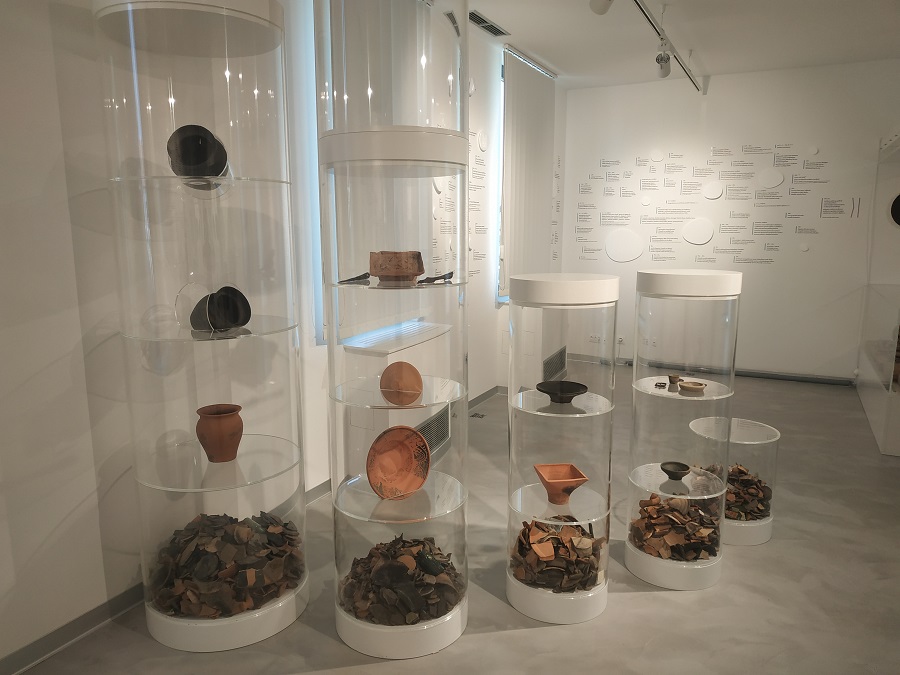
The timeline, which takes visitors through the important points of Ludbreg's long history, starts back in 20,000 BC, with the discovery of Erica, the most extensive and best-preserved Pleistocene woolly rhinoceros (Coelodonta antiquitatis) in Croatia. Erica was found in Mali Sigecak near Ludbreg in 1982.
Archaeological research in Ludbreg started in earnest some time before Erica's discovery, back in 1966. These continued from 1968 to 1979 and were conducted by the Archaeological Museum in Zagreb. And it appeared that Ludbreg had quite a history. Far from being a modern town, evidence of continuous living dating back over two millennia was unearthed.
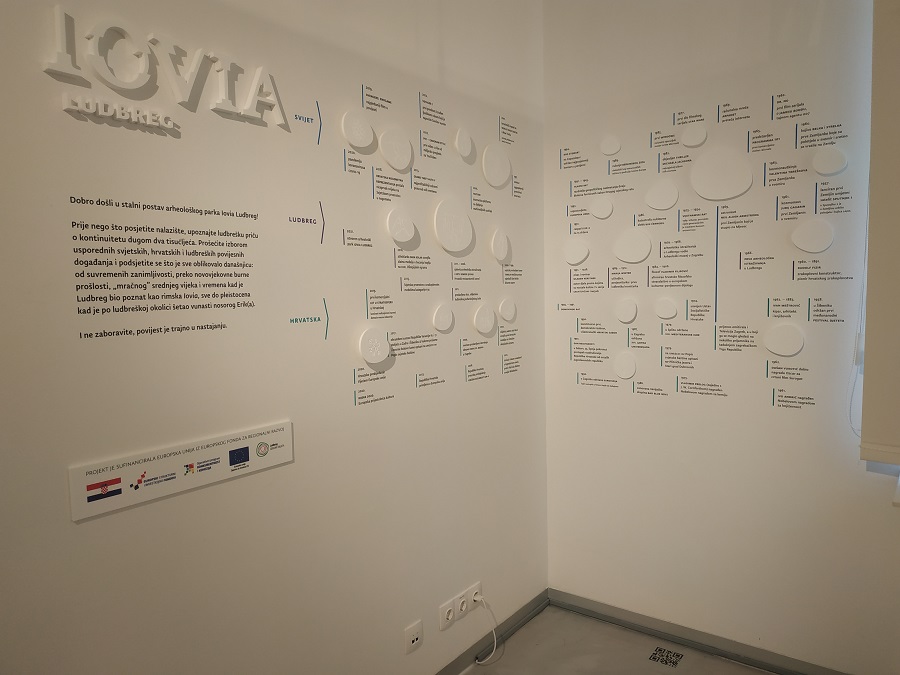
While the Roman era is perhaps the best-preserved, evidence of pre-historic sites from the first century BC to 4,000 BC were found in the wider Ludbreg area: Donji Martijanec, Globočec, Jalžabet, Ludbreg, Ludbreg - Katalena, Ludbreški Ivanac, Martijanec, Sigetec Ludbreški, Struga, Sveti Đurđ, Sveti Petar Ludbreški, Veliki Bukovec, and Vrbanovec.
The Roman settlement of Iovia, the forerunner of Ludbreg, was founded probably sometime after the end of the first century AD. In 1931, iron and bronze decorative parts of a Roman chariot dating back to the 2nd century AD were found in a tumulus, almost certainly the work of a Pannonian workshop.
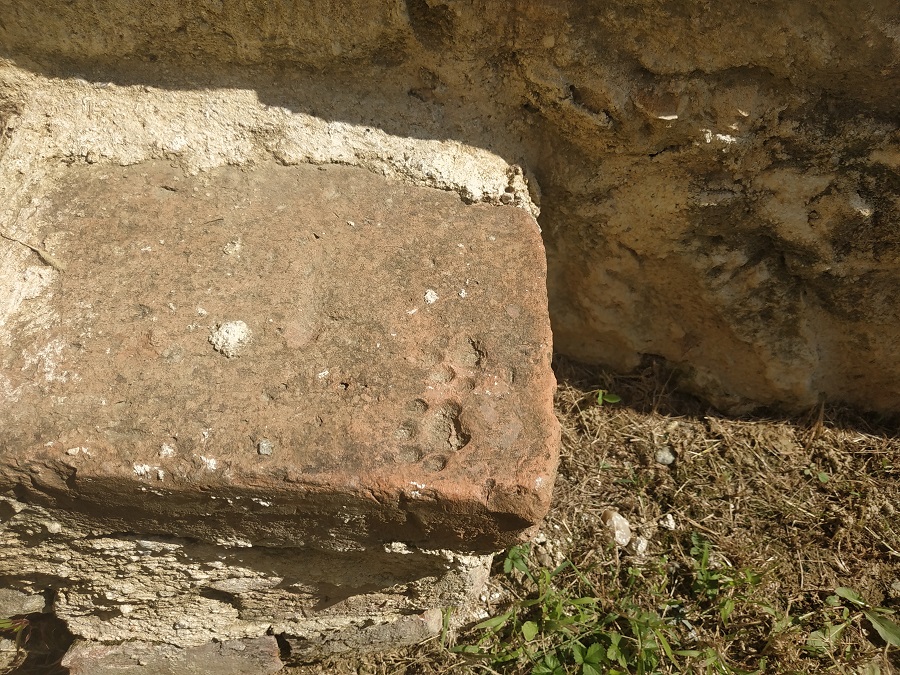
(A Roman cat leaves its mark in footprints)
The earliest archaeological finds dated Roman influence to the 2nd and 3rd centuries AD. The first known Roman find was back in 1859, a fragment with an inscription VALERIANVS CENTVRIO LEGIAE HIC IN LOCO IOVIA DICTO. This was followed in 1906 by part of a large bronze statue of a Roman Emperor. Then in 1942, a fragment of an altar with an inscription DEO SILVANO and IOVIA, the only preserved epigraphic confirmation of Iovia from Ludbreg.
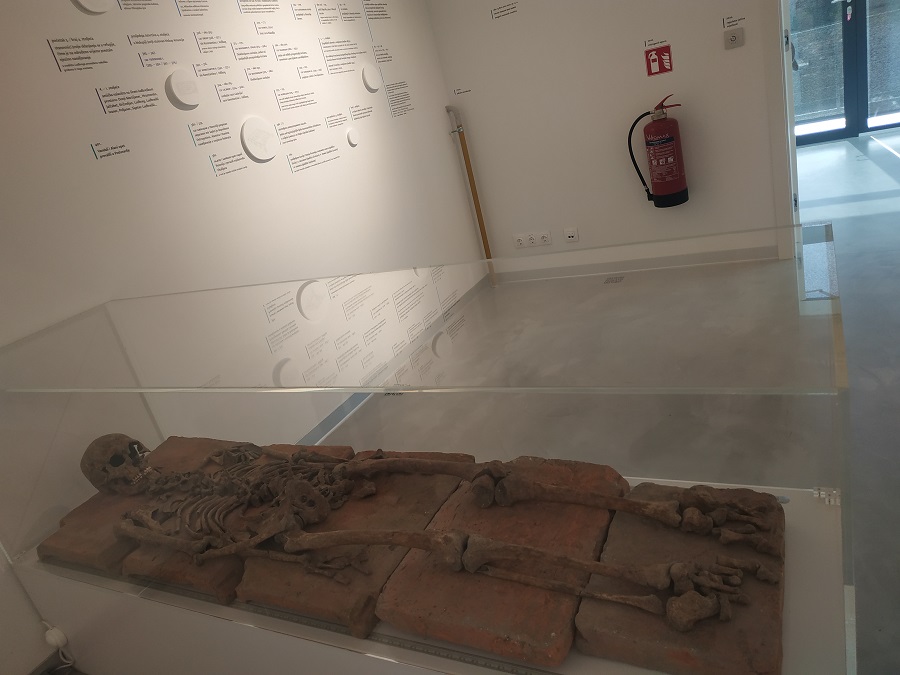
The biggest exhibit in the main building has been dated to around 420 AD. This is the skeleton of a man (about 55 years old) with neurosurgical intervention (trepanation) on the left side of the skull. He was buried with one silver buckle ring in a tomb made out of tegulae located in an adjacent Roman building.
From 2008 to 2011, the Croatian Restoration Institute conducted systematic archaeological research in the center of the town of Ludbreg ("Vrt Somođi"). During these works, the Roman building 1 (total gross area 230 m²) and most of the Roman building 2 (assumed gross area around 1780 m²) were fully explored. The excavated footprints of these buildings now constitute the external part of Iovia Archaeological Park behind the exhibition building.

The Iovia bathing house (Roman object 1) typologically belongs to the group of smaller baths (balneae), while according to the organization of space it belongs to the group of undiluted baths. Due to the spatial relationship with the neighbouring Roman facility, it can be defined as private. Such a form of bathing was widespread throughout the Roman Empire. The Iovia bathing house and the thermal springs in Varaždinske Toplice (Aquae Iasae) are the only fully explored facilities for this purpose in the Croatian part of the Roman province of Pannonia.
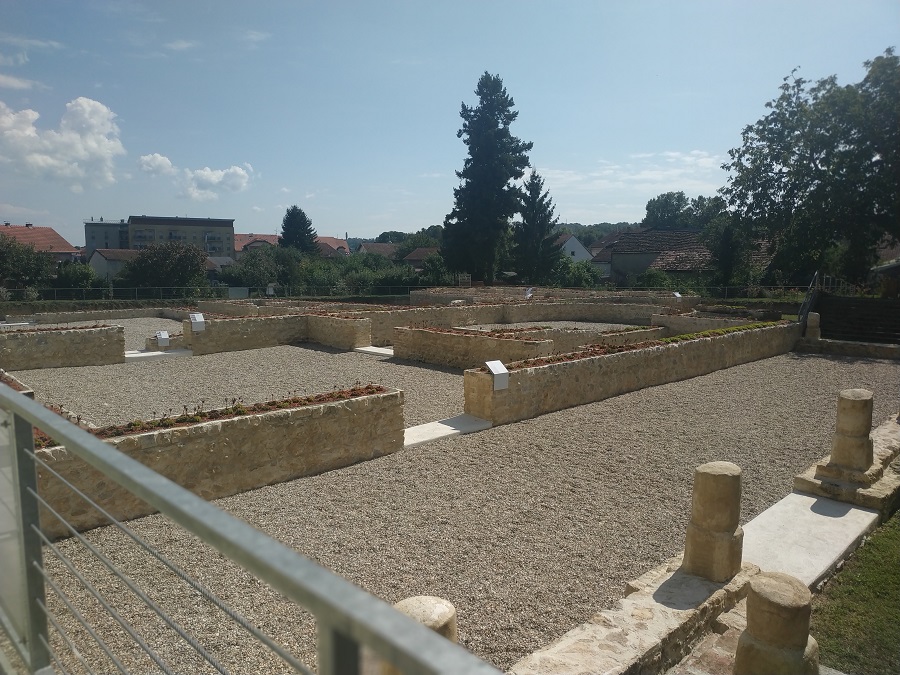
North of the baths, most of the Roman building 2 was explored, organized around a rectangular (uncovered) courtyard and defined on the west side by a porch. The building was built at the same time as the swimming pool, and was rebuilt and enlarged over the following centuries.
The two buildings were deemed to have been built during the second half of the 1st century and abandoned by 420 at the latest. They are typologically the most similar to the portico and peristyle type villas. This type was one of the most frequently used floor plan in the Pannonian, ie Danube - Balkan area.
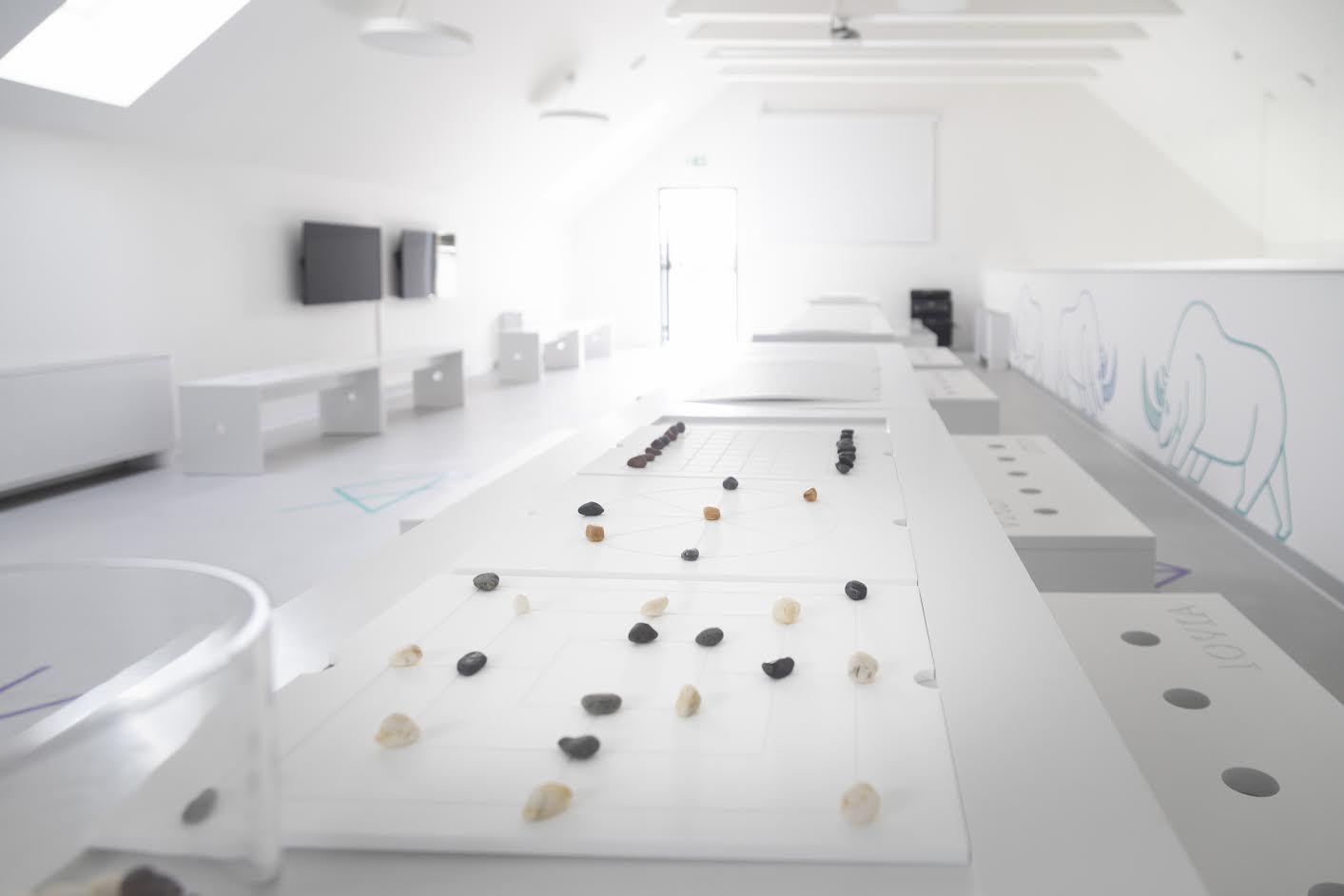
Iovia Archaeological Park is using different tools to bring to life the Roman and pre-historic past of the Ludbreg. One of the key target markets for Iovia is the younger generation, and many school trips are expected once the COVID-19 situation improves. The top floor is given over to a creative space for workshops, using various tools to bring to life a past era. Among these is the intriguing opportunity to learn how to play a variety of Roman board games. We will take a look at the Roman games on offer in Ludbreg - Latrunkuli, Terni Lapilli, and Mlin (Merellus) in a subsequent article.
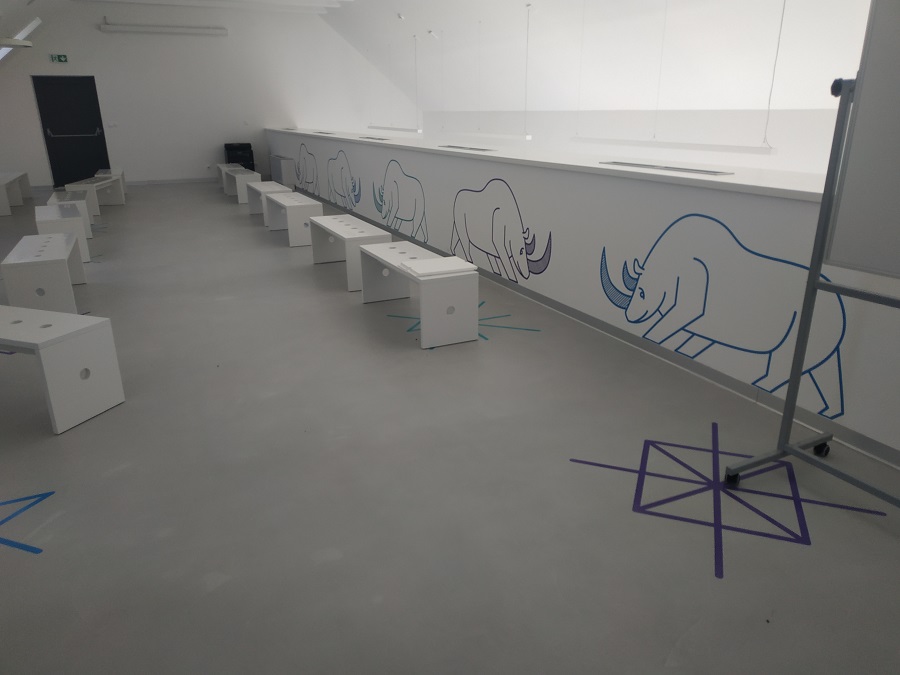
Tourism in continental Croatia is developing step by step. There is a huge story to be told of its rich heritage, and Iovia Archaeological Park is one more important step in the jigsaw. You can learn more about Iovia from the official website.
For the latest news from Ludbreg, follow the dedicated TCN section.
Archaeological Park Iovia - Ludbreg Officially Opens!
May 11, 2021 - The archaeological park Iovia - Ludbreg was ceremoniously opened in Ludbreg on Monday as one of the city's largest and most important projects.
First, the news of the opening of the new archeological park Iovia - Ludbreg on Monday:
Podravski reports that the museum was opened by the Minister of Culture and Media, Ph.D. Nina Obuljen Koržinek with the mayor of Ludbreg Dubravko Bilić and the director of the restoration institute and honorary Ludbreg citizen, doctor of science Tajana Pleše.
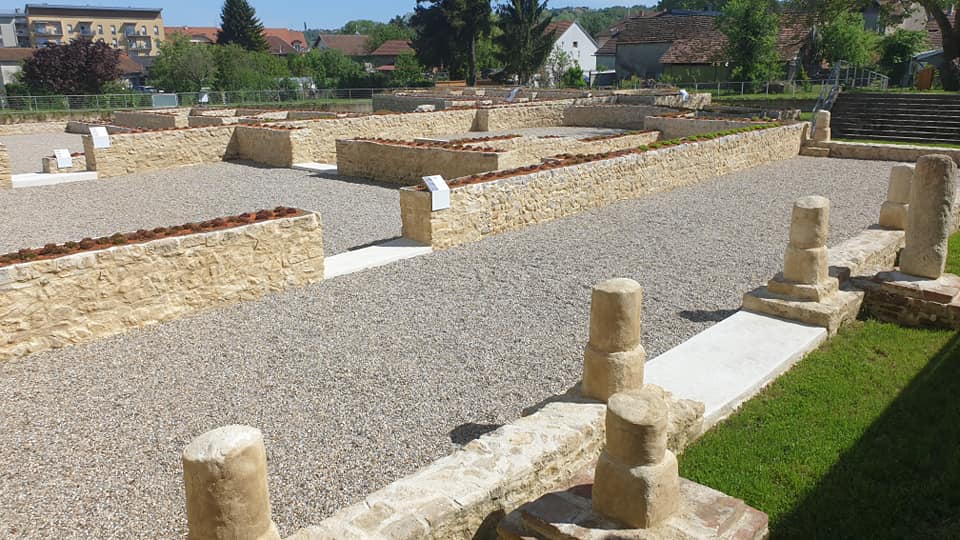
"It is not every day that archeological sites are opened, arranged, researched, and presented in this way, organized according to all international standards, and look how archeological parks should be developed and managed. This locality and other projects funded by the European Union have an important tourist component. When the pandemic situation calms down, this will certainly be one reason for visitors to come to Ludbreg. It is a real pleasure to witness an event like this at this time, and I believe that today's opening is an encouraging announcement of returning to life as we knew it before the pandemic," said Minister Obuljen Koržinek at the opening and thanked everyone who participated in the project.
The mayor of Ludbreg, Dubravko Bilić, said that Ludbreg is a city that is recognized for using European funds. The archeological park project is one of the most important city projects.
"This project was for us the first large registered project that turned Ludbreg into a city of European projects. I remember how much effort and time was put in by everyone who worked on the application to finally submit the application on the last day and thus knock on Europe’s door. Fortunately, the project was approved and received 14.3 million kuna in grants, while the rest came from the Ministry of Regional Development and the City of Ludbreg. In the end, the value will be close to 19 million kuna. The importance of the project is, on the other hand, invaluable because it activates all our potentials in tourism and the economy and presents Ludbreg as a rich place where visitors have something to see," said Mayor Bilić in part of his address and thanked everyone who helped implement the project.
The director of the restoration institute and honorary citizen of Ludbreg, doctor of science Tajana Pleše, also addressed the audience, emphasizing in an emotional speech that such parks are extremely rare and that it is a great honor to be a part of it.
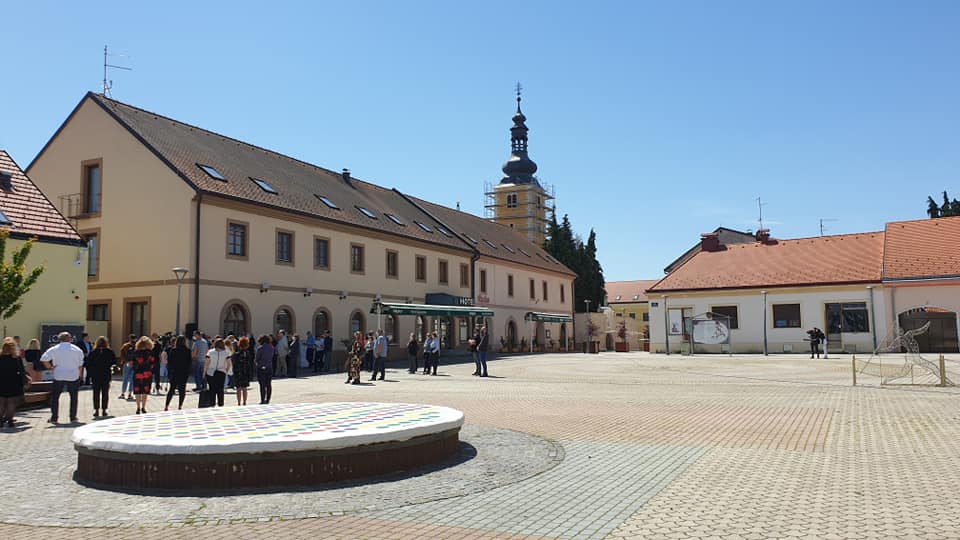
As the presentations continued, I took a step back to take some pictures, and I was struck by just how much of interest there is in this unusual town. I have been mildly fascinated with Ludbreg since my first visit back in 2016 when I wrote Ludbreg, the Most Fascinating, Unusual Little Town in Croatia? And every visit brings something new, in this case the opening of Archeological Park Iovia.
Here, in just a few square metres, in a quiet destination not known for tourism, we can see the Centre of the World, the church which houses the only certified miracle in Croatia, a monument to local javelin heroine, Sara Kolak, who won Olympic Gold in Rio in 2016, and the newly opened museum and park.
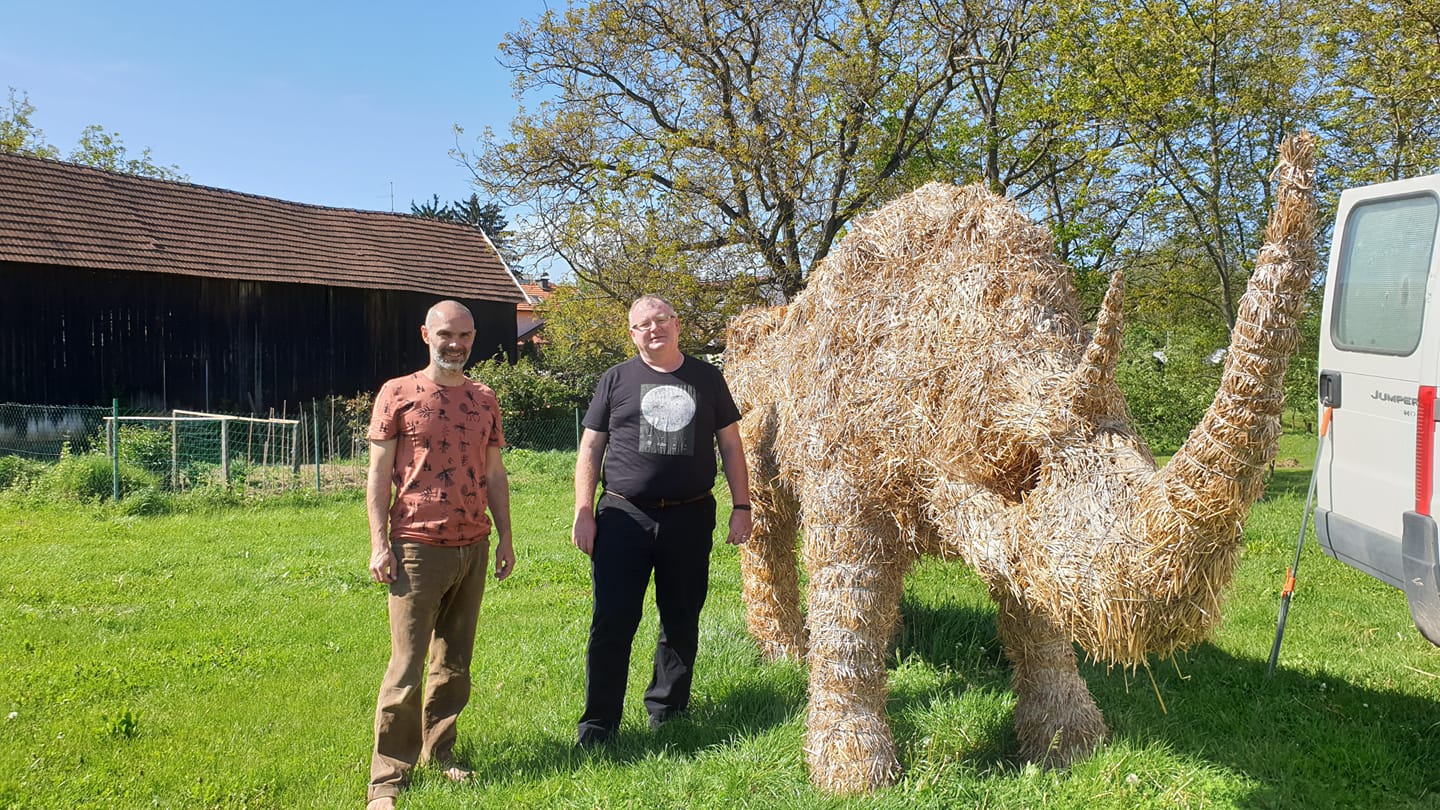
As most destinations are tightening their belts, Ludbreg's chiefs are investing to improve both the town and the tourism offer. It was great to catch up with the King of Straw, as he put the finishing touches to his straw model of Ludbreg's oldest lady, Erika the rhino.
Marc Rowlands' feature story yesterday on the rise of active tourism in and around Ludbreg shows that tourism is very much alive in this part of continental Croatia.
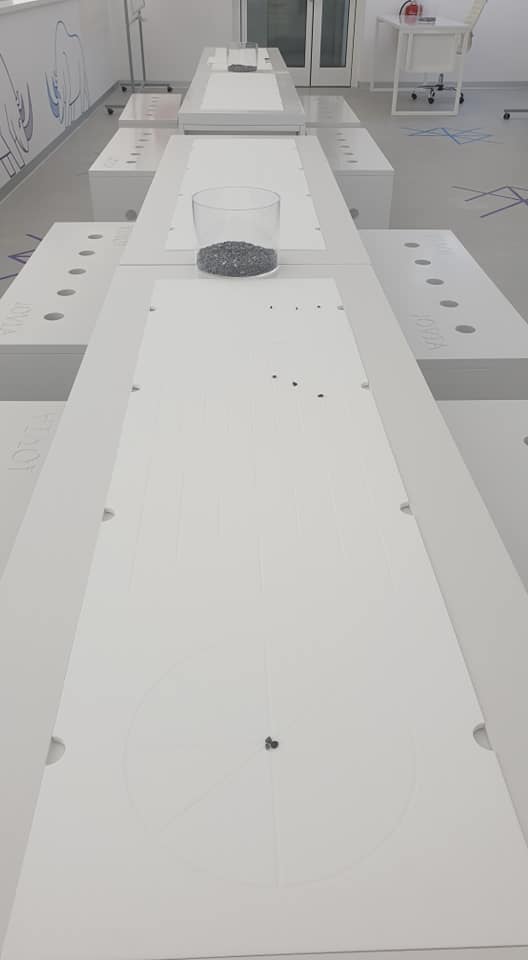
I really liked the layout of the three-storey museum in front of the park. The top floor will be great for workshops.
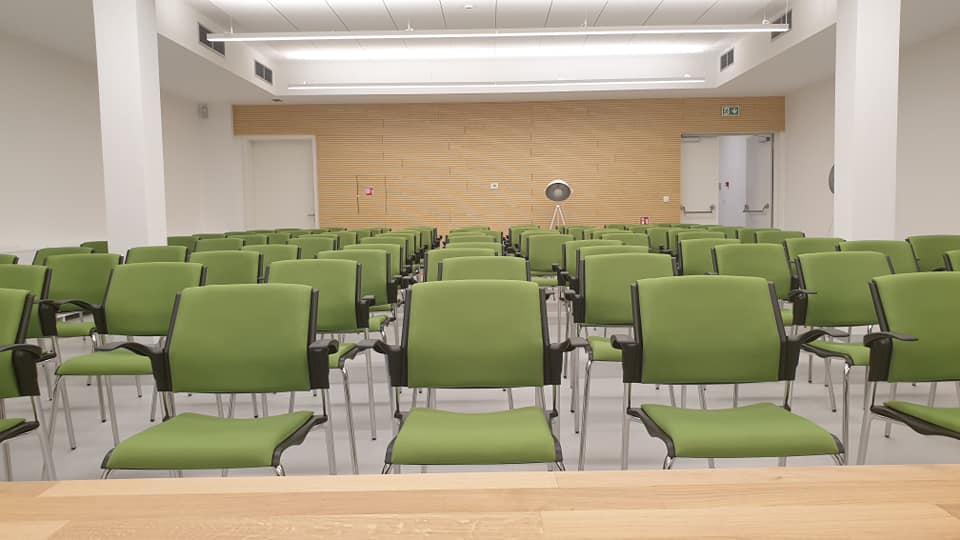
And a new conference facility in the basement.
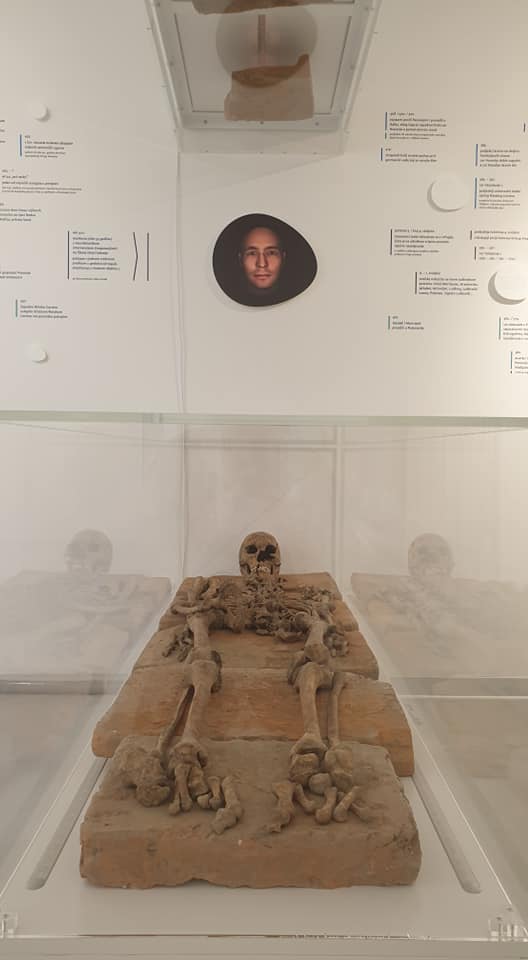
As for the exhibition itself, it was perfectly presented, even if some of the exhibits made me feel empathy after all my recent stress and travel.
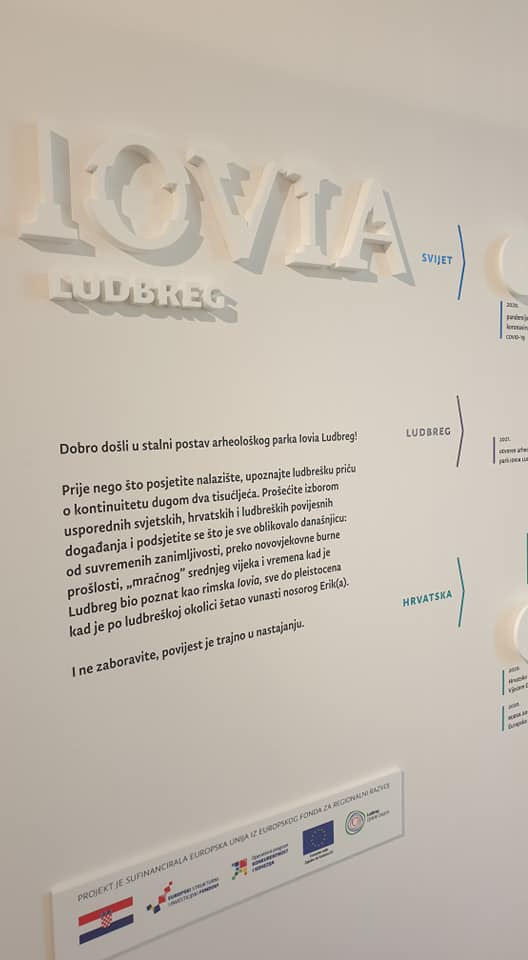
Three clear timelines, side by side - Croatia, the world, and Ludbreg. While the exhibition on the wall is in Croatia, it is available in several languages via multimedia.
A great addition to an already interesting town, which you can get to know in more detail with our One Minute Ludbreg series, in association with the Ludbreg Tourist Board, starting with the story of that miracle.
To learn more about Ludbreg, visit the dedicated TCN section.
For more, follow Made in Croatia.


